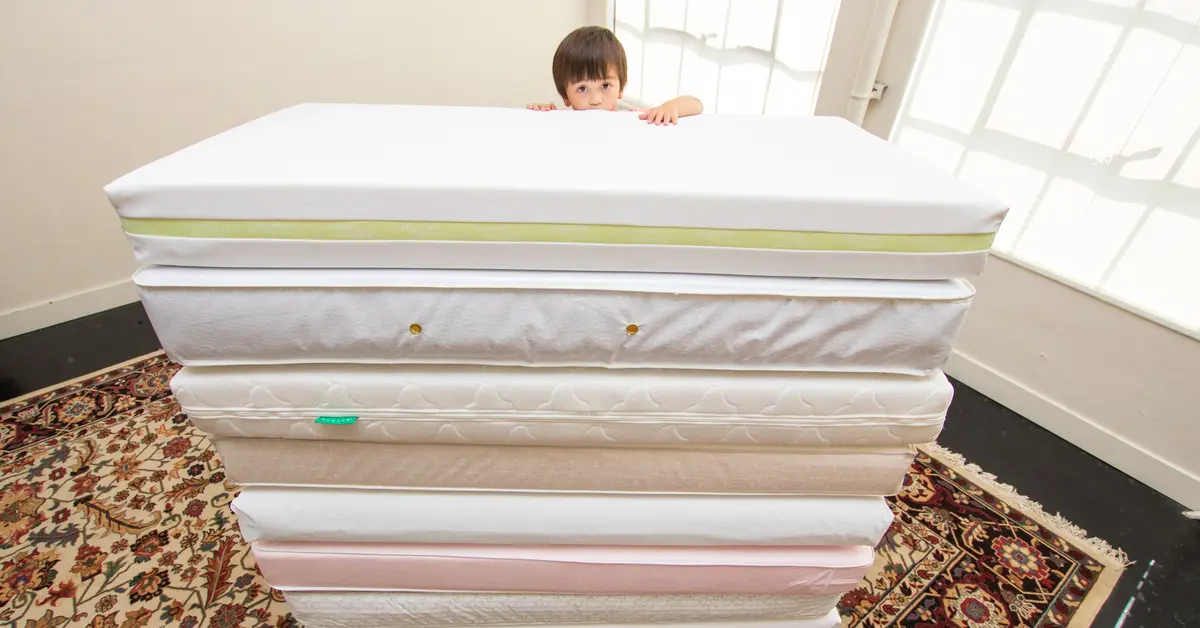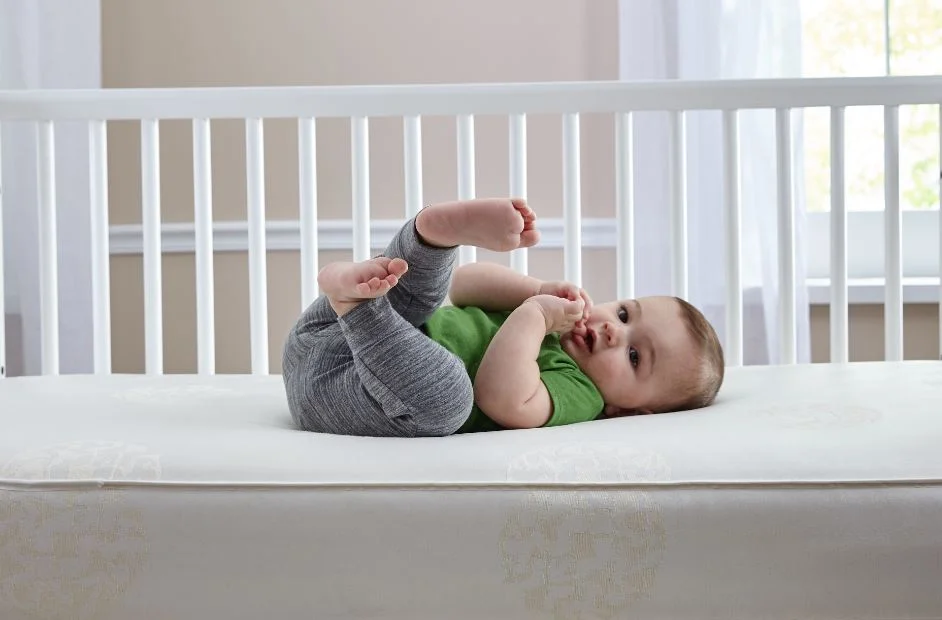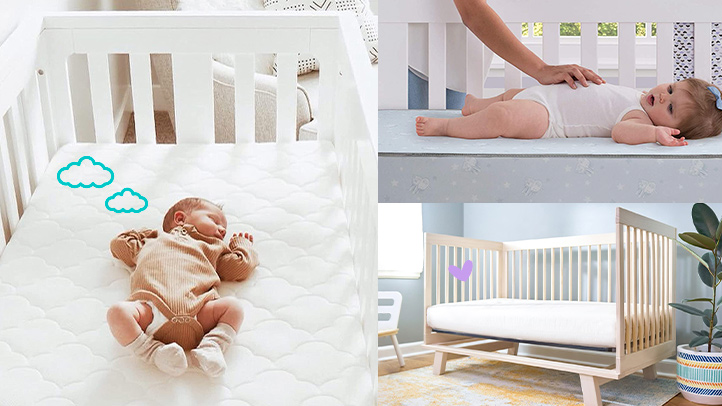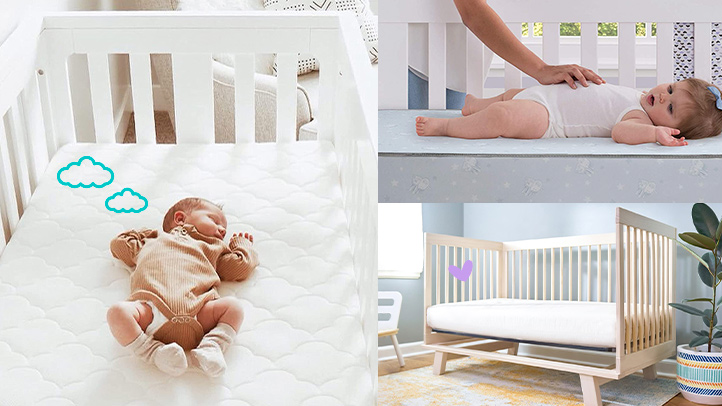Choosing the right crib mattress firmness is crucial for your baby’s safety and comfort. Your little one will spend a significant amount of time in their crib during the early stages of life, so it’s essential to provide a sleeping surface that promotes safe and healthy sleep. This comprehensive guide will explore everything you need to know about baby crib mattress firmness, including the types of crib mattresses available, why an infant’s mattress firmness matters, and how to ensure your baby’s sleep environment is safe and comfortable.
Contents
Types of crib mattresses
When choosing a new crib mattress for your baby, it’s essential to consider the various types available:

Source: nytimes.com
Organic mattress
Certified organic mattresses from reputable shops such as Essentia are safe for your baby. They are made from natural materials and free from harmful, toxic chemicals. These mattresses often come in various firmness levels to suit your baby’s needs. Organic crib mattresses prioritize safety and comfort, providing a supportive yet toxin-free sleep surface.
Innerspring mattress
Innerspring mattresses are constructed with steel coils for support. They are known for their firmness and durability. These mattresses are popular among parents who prioritize a firm sleep surface for their babies. The steel coils provide excellent support, and the firmness level ensures your baby sleeps safely.
Foam mattress
Foam mattresses tend to be lighter and more affordable. They offer good support and are available at various levels of firmness. However, choosing a foam crib mattress that is firm enough to meet safety standards is essential. Foam mattresses are versatile and can offer support and comfort for your baby.
Memory foam mattress
While memory foam mattresses offer excellent support as adult beds, they are not recommended for infants. Their contouring properties can create a too-soft bedding surface, increasing the risk of suffocation. Therefore, it’s best to avoid memory foam crib mattresses for your baby to ensure a safe sleep environment.
The importance of crib mattress firmness

Source: sealybaby.com
Crib mattress firmness is not just a matter of preference. It’s a matter of safety. The proper firmness level is critical for various reasons, the most important of which is the prevention of Sudden Infant Death Syndrome (SIDS).
The risk of Sudden Infant Death Syndrome (SIDS)
Sudden Infant Death Syndrome, commonly known as SIDS, is a devastating tragedy during infancy. Research, including the Chicago Infant Mortality Study, has shown a link between SIDS and infants’ sleep environment. It is believed that the firmness of a crib mattress plays a significant role in reducing the risk of SIDS. Soft mattresses can increase the risk of an infant suffocating, while firm crib mattresses provide a safer sleeping surface.
The role of motor control
Infants lack motor control in their early months, making it crucial to have a firm crib mattress. A soft mattress can contour to the shape of an infant’s head, potentially causing breathing difficulties. A firm mattress ensures the baby’s head remains elevated and its airways open, reducing the risk of suffocation.
Testing crib mattress firmness
Conducting a firmness assessment is pivotal before you commit to a crib mattress purchase. Pressing your hand into the mattress surface is a litmus test to gauge resistance. A bona fide, firm crib mattress should resiliently spring back to its original form rather than molding to the contours of your hand. Mattresses that exhibit undue softness or plushness warrant skepticism and should be avoided.
This straightforward assessment technique serves as a safeguard, ensuring that your selected mattress indeed imparts the requisite firm support to your baby. It’s also worth noting that you should periodically check the firmness of your baby’s crib mattress as your toddler grows. As your infant becomes more active and begins to roll over, the mattress must remain firm for safety.
Creating a safe sleep environment

Source: whattoexpect.com
Check certification
Look for a standard crib mattress that meets safety requirements, such as those set by the Consumer Product Safety Commission. Certified organic or Global Organic Textile Standard (GOTS) mattresses are excellent options as they are free from harmful chemicals. Ensuring your crib mattress has the appropriate certification is vital to providing a safe sleep environment for your baby.
Proper assembly
Follow the assembly instructions provided with your baby mattress to ensure it fits snugly within the crib. Gaps between the mattress and crib sides can be hazardous. Proper assembly guarantees that there are no unsafe gaps that could potentially pose a risk to your baby.
Avoid soft bedding
In addition to firm mattresses, it’s essential to avoid using too soft mattress covers and bedding like pillows, blankets, or crib bumpers. These items can pose a suffocation risk. By eliminating a softer mattress and bedding from the crib, you create a safer sleep environment for your baby. Always remember that an equally safe bedding environment should complement a firm mattress.
No bed sharing
To reduce the risk of SIDS, avoid bed-sharing with your infant. Babies should sleep in their cribs to ensure a safe sleeping environment. Bed-sharing increases the risk of accidental suffocation, and it’s best to follow the recommended guidelines for infant sleep safety. Establishing this practice early on also sets a standard for safe sleeping habits.
The importance of ongoing monitoring
As your baby progresses through their developmental stages, sustained vigilance concerning the firmness and safety of their crib mattress is imperative. Regularly scrutinize the infant mattress for signs of wear and tear and ascertain that it continues to embody the desired firmness. This unwavering vigilance ensures a secure sleep environment for your growing child.
Final Words

Source: deltachildren.com
Choosing the right firmness for your baby’s crib mattress is critical for their safety and comfort. Remember that a firm crib mattress reduces the risk of SIDS and provides proper support for your baby’s developing body. Always test the mattress’s firmness before purchase, create a safe sleep environment by following assembly instructions, and avoid soft bedding and bed-sharing. Remember the importance of ongoing monitoring to ensure your baby’s continued safety and comfort. Your baby’s health and well-being depend on it.
